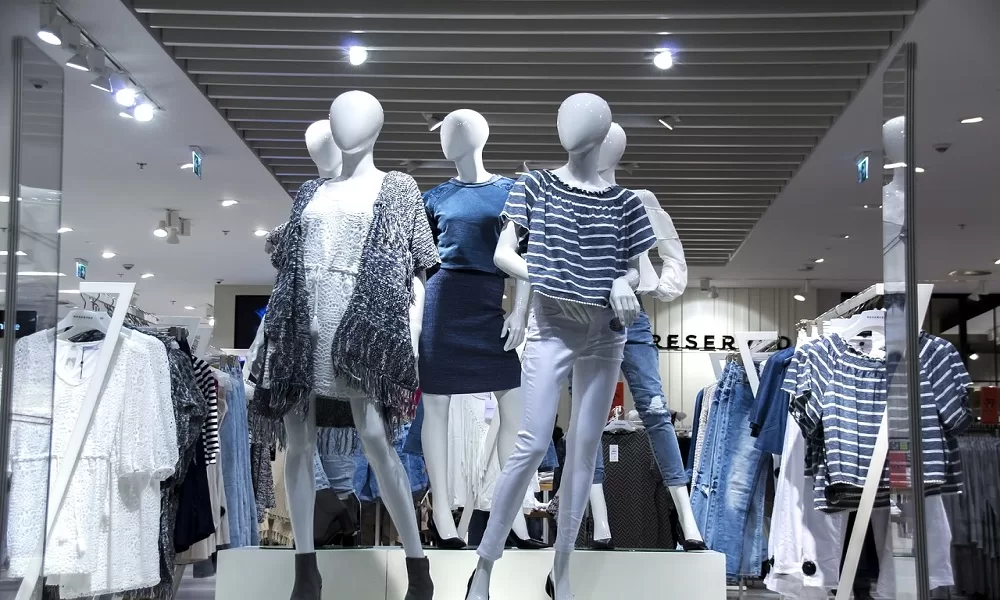Understanding Clothes: The Significance of Material Selections in Your Closet
The option of textile in garments plays a critical function in both appearances and performance. Different products supply differing levels of comfort, toughness, and breathability, directly affecting the wearer's experience. Understanding these nuances can boost one's closet markedly. Numerous ignore exactly how these selections can influence not just individual style, but additionally sustainability. What fabric decisions could redefine your wardrobe and align it with both style and obligation?
The Duty of Textile in vogue and Functionality

Usual Material Types and Their Attributes
When picking garments, comprehending the characteristics of common fabric kinds is important for making informed options. Cotton, a widely-used all-natural fiber, is known for its soft qualities, convenience, and breathability, making it appropriate for sportswear and daily garments. Bed linen, another natural alternative, boasts superb moisture-wicking homes and an unique structure, ideal for cozy climates.Wool, usually preferred for its heat and durability, differs in fineness; merino woollen is soft against the skin, while coarser types are utilized for outerwear. Artificial textiles like polyester and nylon supply sturdiness and resistance to wrinkles, making them popular for activewear and traveling garments. Blends, which incorporate all-natural and artificial fibers, can improve capability while keeping convenience. By recognizing these material features, people can pick garments that aligns with their lifestyle and visual choices.
Breathability and Convenience: Choosing the Right Fabrics for Various Climates
Selecting the right materials for various climates can greatly boost comfort and total wearability. Breathable materials are necessary in hot climates, as they permit air blood circulation and wetness evaporation. Fabrics such as cotton, linen, and moisture-wicking synthetics properly attract sweat away from the body, maintaining the user cool and dry. Conversely, in chillier climates, thicker materials like wool or fleece offer insulation while maintaining breathability, making certain heat without overheating.Additionally, the option of material weight plays an important role; lightweight textiles are more effective for summer season, whereas heavier choices are matched for winter season wear. Recognizing the distinct buildings of each fabric allows individuals to clothe appropriately for varying weather. Eventually, choosing comfy and breathable materials customized to certain climates can considerably improve everyday convenience and improve the total experience of wearing clothes.
Durability and Care: How Material Influences Longevity of Your Closet
Picking the best products can significantly influence the durability and care needs of a closet. Fabrics such as cotton and polyester are understood for their durability and convenience of upkeep, making them ideal for everyday wear. On the other hand, fragile materials like silk and shoelace need even more careful handling and specialized cleansing approaches, which can enhance the time and initiative needed for care. Branded Clothing.Durability is additionally affected by the material's weave and surface; firmly woven textiles often tend to resist deterioration far better than loosely woven choices. Additionally, synthetic blends often offer boosted resilience, integrating the very best qualities of numerous fibers.Understanding the care directions for every material is crucial, as improper cleaning or drying out can result in premature wear. Eventually, selecting durable materials can bring about a longer-lasting closet, minimizing the regularity of substitutes and contributing to an extra sustainable fashion option
The Impact of Material on Fit and Shape

Sustainable Textile Selections: Making Eco-Friendly Choices
The influence of material prolongs past fit and silhouette to include environmental factors, prompting a growing rate of interest in lasting textile choices. Green fabrics, such as natural cotton, hemp, and Tencel, are obtaining grip among consumers that prioritize sustainability in their wardrobes. These products are frequently created with less chemicals and water, reducing their eco-friendly footprint.Additionally, recycled fabrics, made from post-consumer waste, supply a cutting-edge option to the fabric industry's pollution issue. Brands progressively embrace transparency in their sourcing techniques, allowing customers to make educated choices regarding their purchases.Choosing sustainable textiles not only sustains moral methods but also encourages the fashion business to embrace more responsible manufacturing methods. As awareness of ecological problems increases, people are urged to assess the Discover More lasting influence of their fabric options, promoting a motion in the direction of a more eco conscious and lasting approach to style.
Boosting Design: Exactly How Fabric Can Transform a Clothing
While lots of may concentrate on color and cut when picking an attire, the choice of textile plays a crucial function in boosting style and improving total look. Various materials convey distinctive state of minds and messages; for instance, silk exudes high-end and elegance, while jeans uses an informal, unwinded ambiance. The appearance and drape of a fabric can considerably modify the silhouette, with organized textiles supplying a refined appearance and softer ones developing an extra fluid, kicked back aesthetic.Moreover, the weight of the fabric influences wearability throughout periods. Light-weight materials like linen and cotton are ideal for summer, while heavier materials such as wool and velvet offer warmth and beauty in chillier months. Understanding fabric residential properties, such as breathability and stretch, likewise equips people to make educated selections that boost convenience without endangering style. Eventually, the best fabric can transform an outfit from normal to extraordinary, making it an important consideration in any closet.
Regularly Asked Inquiries
Exactly how Do I Determine the Material Content of My Clothing?
To determine fabric material, one can check out care tags, conduct shed tests for fiber recognition, or seek advice from textile swatches. These methods aid differentiate products, guaranteeing notified choices for garments treatment and maintenance in day-to-day wear.
Can Material Choice Affect My State Of Mind or Confidence?
Fabric selection can greatly impact a person's mood and confidence. Branded Clothing. Certain materials may evoke sensations of comfort or sophistication, while others can really feel limiting or unflattering, ultimately affecting self-perception and psychological health throughout the day
What Fabrics Are Finest for Sensitive Skin?
For people with delicate skin, all-natural materials like bed linen, bamboo, and cotton are typically recommended. These materials are breathable, hypoallergenic, and less most likely to cause inflammation, making them suitable options for convenience and skin wellness.
Exactly how Do I Correctly Wash and Look After Different Fabrics?
To properly care and wash for different materials, one should think about each product's particular demands, including temperature settings, detergents, and drying techniques, making sure long life and keeping the material's initial top qualities for optimal use.
Are There Particular Fabrics for Athletic or Performance Use?
Sports or performance wear often makes use of materials such as polyester, spandex, and nylon. These materials are designed for moisture-wicking, breathability, and adaptability, improving movement and convenience during exercises while offering sturdiness and support. On the other hand, in chillier climates, thicker fabrics like woollen or fleece supply insulation while retaining breathability, making sure warmth without overheating.Additionally, the selection of textile weight plays an important role; lightweight materials are more effective for summer, whereas larger options are suited for wintertime wear. In contrast, delicate materials like silk and shoelace need even more careful handling and specialized cleansing techniques, which can boost the time and effort required for care.Durability is additionally affected by the fabric's weave and surface; tightly woven materials often tend to resist wear and tear better than loosely woven options. In contrast, rigid textiles can great site limit activity however offer a timeless, polished look.Moreover, the density and appearance of the fabric can affect the aesthetic understanding of body form. The effect of fabric extends beyond fit and shape to include environmental factors, motivating a growing rate of interest in sustainable fabric selections. The structure and drape of a fabric can drastically alter the silhouette, with organized fabrics supplying a polished appearance and softer ones producing a more fluid, kicked back aesthetic.Moreover, the weight of the material influences wearability throughout seasons.
Comments on “Branded Clothing for Travel: Wrinkle-Resistant Fabrics That Perform”